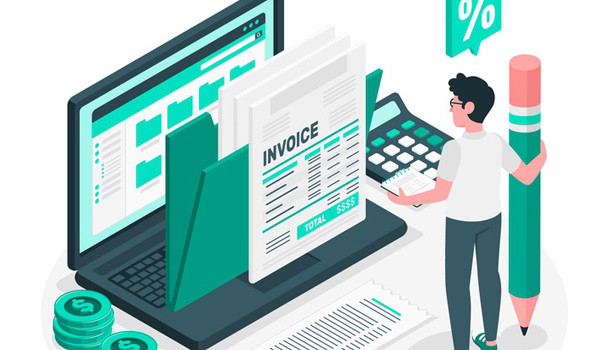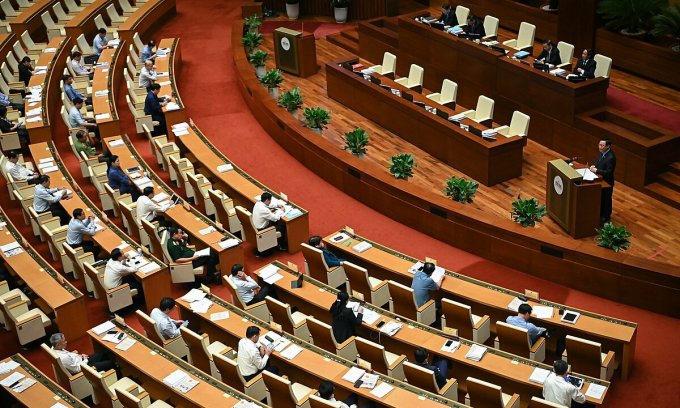Methods of issuing e-invoices in Vietnam

Electronic invoices are an important requirement for business operations. However, for many businesses, the transition to using e-invoices still faces many problems when it is unclear about valid and legal e-invoice templates as well as standard e-invoice templates. So, Methods of issuing e-invoices in Vietnam. Let’s find out about this issue with Lawyer X!
Legal grounds
- Decree 123/2020/ND-CP
- Circular 78/2021/TT-BTC
What is a legal electronic invoice?
For invoices generated from cash registers connected to electronic data transfer with tax authorities, the following principles must be followed:
Recognize printed invoices from cash registers that connect electronic data to tax authorities
No digital signature required
Expenses for purchasing goods and services using invoices (or copying invoices or looking up information from the electronic portal of the General Department of Taxation on invoices) created from cash registers shall be determined as expenses with credit card payments. enough legal invoices and documents when determining tax obligations
Legitimate e-invoices must meet the following contents:
Invoice name, invoice symbol, electronic invoice model number symbol, invoice number
Name, address, tax code of the seller
Buyer’s name, address, tax code (if buyer has tax code)
Name, unit of calculation, quantity and unit price of goods or services; into money excluding value added tax, value added tax rate, total value added tax amount according to each tax rate, total value added tax amount, total payment including value tax increase in the case of a value-added invoice total payment amount
Digital signature, electronic signature of the seller
Buyer’s digital signature and electronic signature (if any)
Time to issue e-invoices
Tax authority code for e-invoices with tax authority code
Fees and charges belonging to the state budget and other relevant contents (if any)
How many methods of issuing e-invoices are there?
What is the process of issuing E-Invoices?
For those who register for e-invoices directly at the General Department of Taxation’s web portal, before performing the steps in the registration process, your business needs to ensure that it has received notice of the register to use electronic invoices from the General Department of Taxation. After that, the units will proceed to follow process 03 as follows:
Step 1: Prepare the Declaration of Registration for the use of e-invoices according to Form No. 01/DKTD-HDĐT Appendix IA issued together with Decree 123 and send it to the tax authority.
Step 2: After receiving the application, the General Department of Taxation Portal will send an electronic notice of the receipt of the application for the use of e-invoices of the enterprise, economic organization, or other organization. Business households and individuals via the email address that the unit has registered with the tax authority.
Step 3: Within 01 working day from the date of receiving the registration application, the tax authority is responsible for giving feedback to the unit on the acceptance or non-acceptance of the registration for the use of e-invoices according to Form No. 01. /TB-DKDT Appendix IB issued together with Decree 123.
Case 1: The tax authority accepts the application for electronic invoices. Enterprises issue electronic invoices according to the provisions of Decree 123 and Circular 78.
Field 2: Tax authorities do not accept applications for electronic invoices. The enterprise shall supplement and amend the information to suit the requirements and send it back to the tax authority according to the above steps.
From the time the tax authority accepts the registration of using e-invoices of enterprises, economic organizations, business households and individuals must destroy the issued paper invoices as unused and stop using them. e-applications previously announced in accordance with the old regulations (if any). Procedures for canceling e-invoices shall comply with the provisions of Article 27 of Decree 123.
According to the new regulations of Circular 78/2021/TT-BTC, enterprises do not need to carry out procedures for notifying the issuance of e-invoices, invoice templates and invoice quantities with tax authorities as before.
Tax agency response time
After submitting the registration information for issuance of e-invoices to the tax office, within 01 working day from the date of receipt of the registration for the use of e-invoices, the tax authority shall send a notice via email. of the enterprise or send it directly to the enterprise about accepting or not accepting registration for the use of e-invoices.
In case an enterprise or organization registers to transfer invoice data directly to the tax office, the tax authority will send a response within 5 working days to the enterprise within 5 working days. Enterprises need to prepare technical infrastructure and coordinate with tax authorities to conduct the connection. Time to make the connection in 10 working days.
On a monthly basis, the tax authority will conduct a review of the users of e-invoices with the code of not having to pay for services and send a notice on the switch to using e-invoices with the tax authority’s code. through the service provider and change the information using the invoice with the code as prescribed.
For cases of applying e-invoices without code, the tax authority will periodically review to notify the enterprise of converting e-invoices with the tax authority’s code.
The above is the registration procedure for using e-invoices according to the new update from Circular 78 and Decree 123. Enterprises and business organizations need to update to register for issuance of e-invoices and convert to e-invoices. e-invoice with tax authority code if needed.
Registration of e-invoices for invoice users under Circular 32 need to be transferred to Circular 78
Step 1: Register Form No. 01/TB-DKĐT
Step 2: Wait for the tax authority’s confirmation on the acceptance to move to Circular 78.
Note: The unit continues to issue invoices according to Circular 32 while waiting for the tax authorities to accept.
Step 3: After being approved to transfer to Circular 78 with message code 103 on the software or sent to the registered email, proceed as follows:
3.1. Notify the result of invoice cancellation according to the form TB03/AC to the tax authority in electronic form.
3.2. Make a report on the status of using invoices BC26/AC
Step 4: Complete Step 3 and have been approved from the Tax Authority
4.1. Cancel the old strip according to Circular 32 on HDDT. software
4.2. Create a new form according to Circular 78 and issue an invoice
Services of LawyerX
Prestigious professional services: Firstly, the team of consultants and consultants for many years in the field of civil status, and customer support.
On-time: Certainly, with the motto “Get your lawyer right at your fingertips”, we ensure the service always performs on time. The rights and interests of customers always come first.
Cost: Besides, Lawyer X’s service costs are highly competitive; depending on the nature of the particular case. So, we want our guests to have the best possible service experience. Therefore, costs which guaranteed to be the most suitable and economical for customers.
Confidentiality of client information: Finally, all brand information of client Lawyer X will be 100% confidential.
Please contact us immediately if you have any questions about “Methods of issuing e-invoices in Vietnam”
Contact LSX Lawfirm
Finally, we hope this article is useful for you to answer the question about: “Methods of issuing e-invoices in Vietnam”. If you need any further information, please contact LSX Law firm: +84846175333 or Email: [email protected]
Related articles:
- How to look up e-invoices with the tax authority’s code in Vietnam
- Regulations on the use of e-invoices with codes of tax authorities in Vietnam
- Application of electronic invoices and vouchers in tax management in Vietnam
Frequently asked questions
Is a character with one natural digit that is the natural numbers 1, 2, 3, 4, 5, 6 to reflect the type of electronic invoice as follows:
– No. 1: Reflect the type of value-added electronic invoice;
– No. 2: Reflecting the type of sales e-invoice;
– No. 3: Reflecting the type of electronic invoice for the sale of public property;
– No. 4: National reserve sales e-invoice;
– Number 5: Electronic stamps, electronic tickets, electronic cards, electronic receipts, electronic documents with other names but with the content of the electronic invoice;
– No. 6: Electronic delivery cum internal transportation note, delivery note sent to electronic agents.
From July 1, 2022, regardless of stores and businesses doing business in retail, supermarkets, groceries, drugs, e-commerce, restaurants, hotels, etc., it is necessary to convert digitally and apply exports. Electronic invoices from the connected cash register transfer data to the tax authorities and must ensure:
Recognize printed invoices from cash registers that connect electronic data to tax authorities
It is not mandatory for businesses and stores to have a digital signature
Expenses for purchase of goods and services using invoices generated from cash registers are determined as expenses with sufficient legal invoices and documents when determining tax payment obligations.
Conclusion: So the above is Methods of issuing e-invoices in Vietnam. Hopefully with this article can help you in life, please always follow and read our good articles on the website: lsxlawfirm.com




